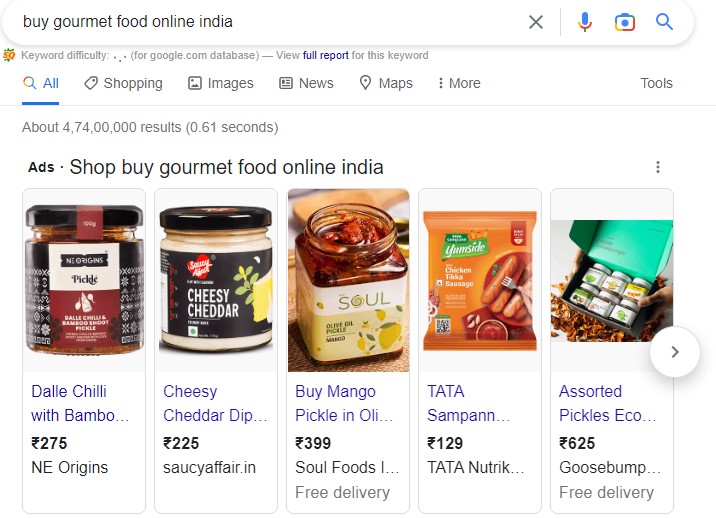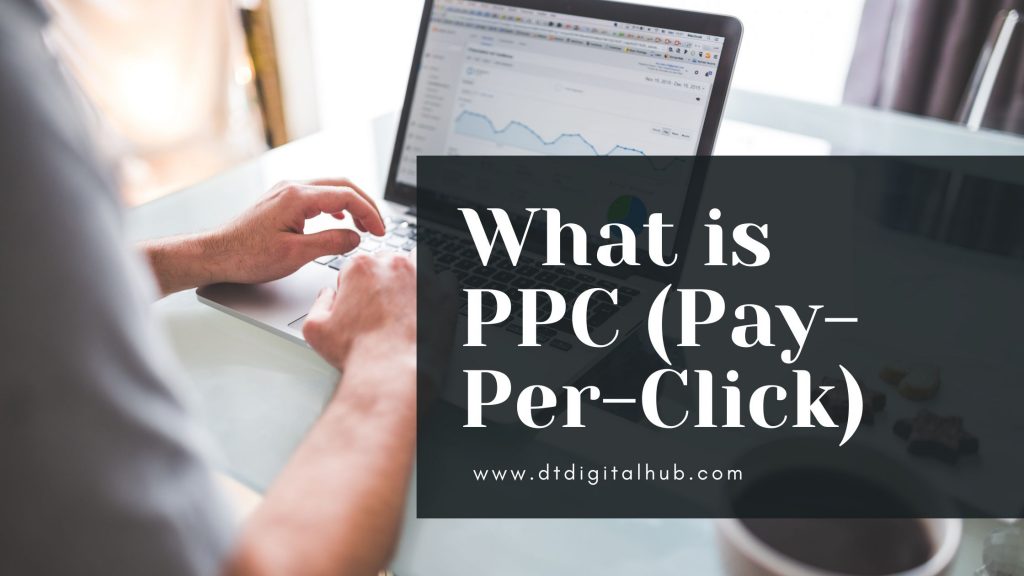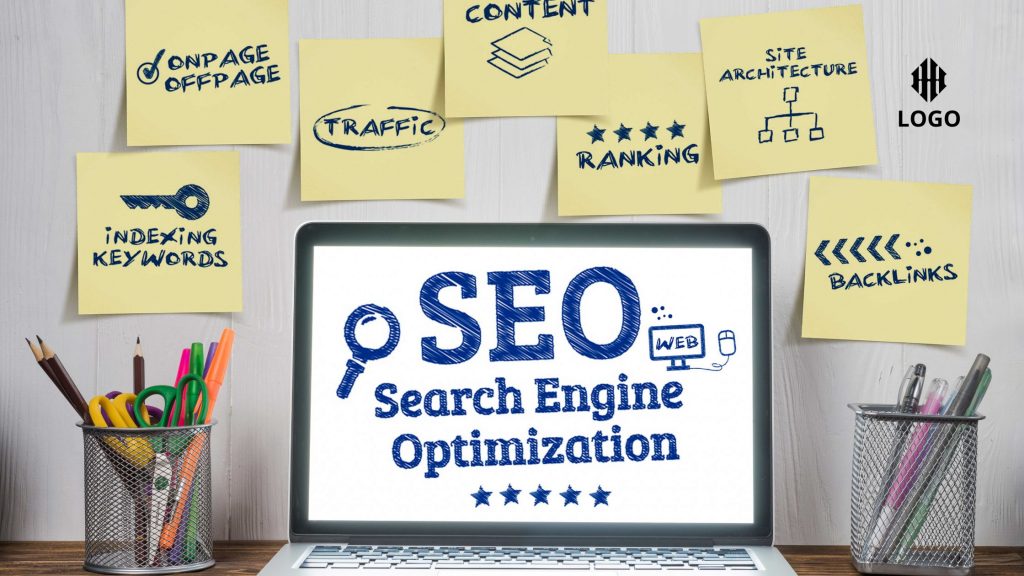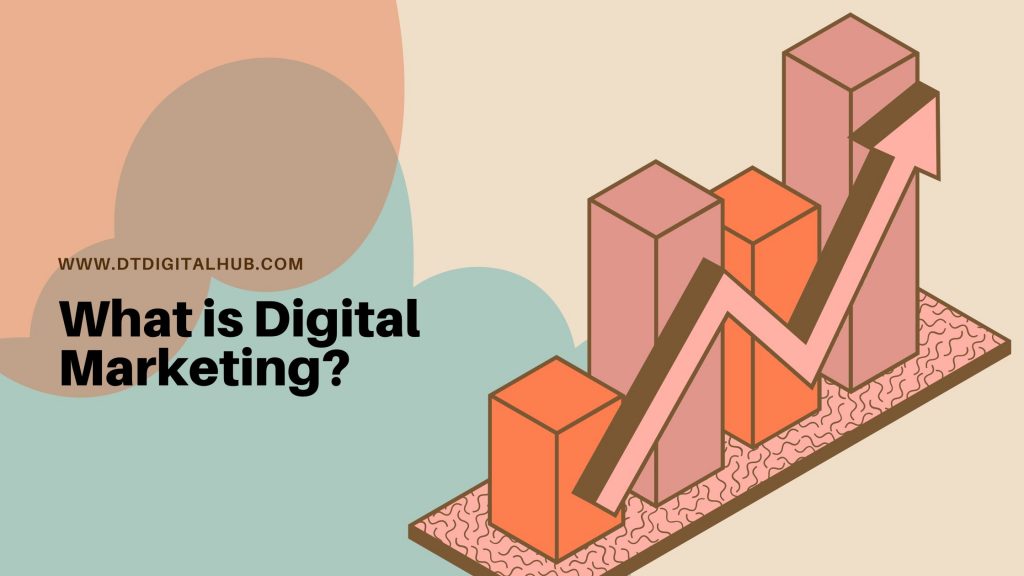What is PPC?
PPC stands for Pay-Per-Click. PPC is a type of digital marketing where businesses pay a fee each time their ad is clicked. PPC advertising allows businesses to reach potential customers at the exact moment they are searching for products or services like theirs.
PPC advertising is usually delivered through platforms such as Google AdWords, Bing Ads, and Facebook Ads. Businesses create ads and bid on specific keywords that they think their target audience will use in search engines. When a user searches for one of those keywords, the ad may appear at the top of the search results, or in the case of Facebook, in the users’ newsfeed.
PPC advertising is a cost-effective way to reach a highly targeted audience, as businesses only pay when someone clicks on their ad. This makes it a great way for businesses to get their message in front of potential customers at the exact moment they are searching for what they have to offer.
PPC advertising can be used for different goals like brand awareness, generating leads, driving online sales, and so on. It’s important to have a clear strategy and goals for a PPC campaign and to continuously monitor and optimize it. To make sure it’s reaching the right audience and providing a good return on investment (ROI).
Types of PPC (Pay-Per-Click)
PPC (Pay-Per-Click) is a form of online advertising where advertisers pay a fee each time one of their ads is clicked. There are several types of PPC advertising, including:

Search advertising: This type of PPC advertising involves placing ads on search engine results pages (SERPs) when users search for specific keywords. These ads are often text-based and appear at the top or bottom of SERPs.

Display advertising: This type of PPC advertising involves placing ads on websites, often in the form of banners or other graphical ads. These ads can be targeted to specific audiences based on demographics, interests, and behaviors.

Shopping advertising: This type of PPC advertising is used by e-commerce businesses to promote their products on search engine results pages and on shopping comparison websites.
Social media advertising: This type of PPC advertising involves placing ads on social media platforms such as Facebook, Instagram, and Twitter. Ads can be targeted to specific audiences based on demographics, interests, and behaviors.
Video advertising: This type of PPC advertising uses videos to promote products or services, often on platforms such as YouTube and Vimeo.
Remarketing: This type of PPC advertising targets people who have previously visited a website, or interacted with a business.
This is achieved by placing a cookie on the user’s browser and using that cookie to display relevant ads on other websites they visit.
App install ads: This type of PPC advertising is used to drive more people to download an app, by placing ads that are focused on the app in mobile apps or in mobile web browsers.
Smart Bidding: This type of PPC advertising uses machine learning algorithms to automate the bid management process, it optimizes bids based on performance in real-time.
Benefits of using PPC
PPC advertising offers targeted reach, immediate results, cost-effectiveness, measurability, flexibility, brand visibility, complementing SEO, reaching beyond organic search, and increasing ROI.
There are many benefits to using PPC (Pay-Per-Click) advertising, including:
Targeted reach: PPC advertising allows businesses to reach a highly targeted audience, as they can choose the keywords and demographics that their ads will be shown to.
Immediate results: Unlike SEO, PPC advertising can provide immediate results. As ads can start appearing on search engines and social media platforms as the campaign is set up.
Cost-effective: PPC advertising is a cost-effective way to reach a targeted audience, as businesses only pay when someone clicks on their ad.
Measurable: PPC advertising is easy to track and measure, allowing businesses to see which ads are performing well and which are not. This allows them to make data-driven decisions and optimize their campaigns.
Flexibility: PPC advertising allows businesses to adjust their campaigns in real-time, which means they can make changes to their ads and targeting at any time.
Brand visibility: PPC advertising can help increase brand visibility and awareness, as ads will be shown to a large number of potential customers.
Complementing SEO: PPC advertising can complement SEO efforts by driving immediate traffic to a website while the SEO strategy is being implemented.
Reach beyond organic search: PPC advertising allows businesses to reach beyond organic search results, where their website may not rank as high.
Increased ROI: Due to the targeted approach and ability to measure performance, PPC advertising can provide a higher return on investment (ROI).
How does PPC advertising work?
PPC (Pay-Per-Click) advertising works by allowing businesses to create ads and bid on specific keywords that they think their target audience will use in search engines. When a user searches for one of those keywords, the ad may appear at the top of the search results, or in the case of social media platforms such as Facebook, in the users’ newsfeed.
Here is an overview of the process:
A business creates an account with a PPC advertising platform, such as Google AdWords, Bing Ads, or Facebook Ads.
The business creates ads and chooses the keywords they want to bid on. These keywords are the phrases or terms that the business thinks their target audience will use in search engines.
The business sets a bid for each keyword, which is the amount they are willing to pay for each click on their ad.
When a user searches for one of the keywords the business has bid on, the ad may appear at the top of the search results.
If the user clicks on the ad, they will be directed to the business’s website, and the business will be charged the amount they bid for that keyword.
The business can track and measure the performance of their ads through the PPC platform’s analytics, which will show how many clicks, impressions, and conversions the ads received, as
Google Ads
Google Ads, formerly known as Google AdWords, is a PPC (Pay-Per-Click) advertising platform that allows businesses to create and run ads on Google Search, Google Maps, and other Google properties. Google Ads allows businesses to reach a highly targeted audience by showing ads to users who are searching for keywords related to their products or services.
Here is an overview of how Google Ads works:
A business creates an account with Google Ads and sets up a campaign.
The business creates ads and chooses the keywords they want to bid on. These keywords are the phrases or terms that the business thinks their target audience will use in Google search.
The business sets a bid for each keyword, which is the amount they are willing to pay for each click on their ad.
When a user searches for one of the keywords the business has bid on, the ad may appear at the top of the search results or on the Google search results pages.
If the user clicks on the ad, they will be directed to the business’s website, and the business will be charged the amount they bid for that keyword.
The business can track and measure the performance of their ads through the Google Ads platform’s analytics, which will show how many clicks, impressions, and conversions the ads received, as well as the cost per click (CPC) and return on investment (ROI).
Google Ads also offers additional features such as remarketing, where businesses can target users who have previously visited their website and retarget them with ads.
Google Ads also offers additional targeting options like demographics, interests, location, etc.
In summary, Google Ads allows businesses to create and run ads on Google search, maps and other Google properties, reach a highly targeted audience, track and measure the performance of their ads, and use additional features such as remarketing and targeting options.
Google Shopping
Google Shopping is a feature within the Google Ads platform that allows businesses to create and run product listing ads (PLAs) on Google Search, Google Images, and Google Shopping. These PLAs display product images, pricing, and other information to users who are searching for products similar to those offered by the business. Google Shopping is a great way for e-commerce businesses to drive sales and increase visibility for their products.
Here is an overview of how Google Shopping works:
A business creates an account with Google Ads and sets up a Google Shopping campaign.
The business uploads their product data feed, which includes information such as product images, pricing, and descriptions.
Google uses this product data to match the products to relevant search queries, and the business’s products may appear in the search results as PLAs.
When a user clicks on one of the PLAs, they will be directed to the business’s website, and the business will be charged a cost-per-click (CPC) fee.
The business can track and measure the performance of their PLAs through the Google Ads platform’s analytics, which will show how many clicks, impressions, and conversions the PLAs received, as well as the cost per click (CPC) and return on investment (ROI).
Google Shopping also offers additional features such as remarketing, where
Who should use PPC?
PPC (Pay-Per-Click) advertising can be beneficial for a wide range of businesses, but it’s especially useful for businesses that:
Have a clear value proposition: PPC advertising can be an effective way to communicate the value of a business’s products or services to a targeted audience.
Have a defined target audience: PPC advertising allows businesses to reach a highly targeted audience, which makes it an effective way to reach potential customers who are actively searching for products or services like theirs.
Want to generate leads or sales: PPC advertising can be an effective way to drive leads and sales for a business, as it allows businesses to reach potential customers at the exact moment they are searching for what they have to offer.
Have a budget: PPC advertising can be an effective way to reach a targeted audience, but it does require a budget, as businesses are charged a fee each time their ad is clicked.
Want to increase brand visibility: PPC advertising can help increase brand visibility and awareness, as ads will be shown to a large number of potential customers.
Have a website and are looking to drive traffic: PPC advertising can be a great way to drive immediate traffic to a website, even if the website is not yet ranking high in organic search results
Want to reach beyond the local market: PPC advertising allows businesses to reach beyond their local market to a global audience.
In summary, PPC advertising can be beneficial for businesses that have a clear value proposition, defined target audience, want to generate leads or sales, have a budget, want to increase brand visibility, have a website and are looking to drive traffic, and want to reach beyond the local market.
How to do PPC keyword research?
Keyword research is an important step in the process of setting up a PPC (Pay-Per-Click) campaign, as it helps businesses identify the keywords and phrases that their target audience is using in search engines. Here are some steps to conduct PPC keyword research:
Identify your target audience: Understand your target audience’s demographics, interests, and behaviors.

Use keyword research tools: Use keyword research tools such as Google Keyword Planner, SEMrush, Ahrefs, etc. to identify relevant keywords and phrases that your target audience is using in search engines.
Analyze your competitors: Analyze your competitors’ PPC campaigns to identify the keywords and phrases they are targeting.
Identify long-tail keywords: Long-tail keywords are longer, more specific phrases that are less competitive and can be more targeted to your audience.
Group keywords into ad groups: Group related keywords together into ad groups to make it easier to create targeted ads and measure performance.
Analyze search volume and competition: Analyze the search volume and competition for each keyword to identify which keywords are most likely to drive traffic and conversions.
Use negative keywords: Use negative keywords to exclude irrelevant search terms and avoid wasting ad spend on unqualified clicks.
Monitor and update your keywords: Regularly monitor your keywords to see which ones are driving the most conversions and update your keyword list as needed.
In summary, PPC keyword research involves identifying your target audience, using keyword research tools, analyzing your competitors, identifying long-tail keywords, grouping keywords into ad groups, analyzing search volume and competition, using negative keywords, and monitoring and updating your keywords regularly.
PPC campaign management
PPC (Pay-Per-Click) campaign management involves creating, implementing, and monitoring PPC campaigns to achieve business objectives. Here are some steps for managing a PPC campaign:
Set up your PPC account: Set up an account with a PPC advertising platform, such as Google Ads or Facebook Ads.
Define your target audience: Identify your target audience by researching demographics, interests, and behaviors.
Set clear goals: Identify specific, measurable, achievable, relevant, and time-bound (SMART) goals for your PPC campaign.
Conduct keyword research: Use keyword research tools to identify relevant keywords and phrases that your target audience is using in search engines.
Create ad groups: Group related keywords together into ad groups to make it easier to create targeted ads and measure performance.
Create ads: Create ads that align with your goals and ad groups, and include a clear call to action.
Set up targeting: Set up targeting options such as location, demographics, and interests to reach the right audience.
Set a budget: Determine how much money you will allocate to your PPC campaign and set a daily or monthly budget.
Launch the campaign: Put your campaign live, and monitor the performance regularly.
Monitor and analyze: Track and measure your campaign’s performance using tools such as Google Analytics, and analyze the data to identify areas for improvement.
Optimize: Make changes to your campaign based on the data and results, such as adjusting bids, targeting options, and ad copy, to optimize performance.
Continuously monitor: Continuously monitor and optimize your campaign to ensure it’s reaching the right audience and providing a good return on investment (ROI).
How to get started with PPC
Getting started with PPC (Pay-Per-Click) advertising can seem daunting, but with the right approach, it can be straightforward. Here are some steps to get started with PPC:
Define your goals: Identify specific, measurable, achievable, relevant, and time-bound (SMART) goals for your PPC campaign.
Research your target audience: Understand your target audience’s demographics, interests, and behaviors.
Choose your platform: Decide which PPC platform(s) you want to use, such as Google Ads, Bing Ads, Facebook Ads, etc.
Set up an account: Set up an account with the chosen PPC platform(s) and link it to your website or landing page.
Conduct keyword research: Use keyword research tools to identify relevant keywords and phrases that your target audience is using in search engines.
Create ad groups: Group related keywords together into ad groups to make it easier to create targeted ads and measure performance.
Create ads: Create ads that align with your goals and ad groups, and include a clear call to action.
Set targeting options: Set targeting options such as location, demographics, and interests to reach the right audience.
Set a budget: Determine how much money you will allocate to your PPC campaign and set a daily or monthly budget.
Launch the campaign: Put your campaign live, and monitor the performance regularly.
Monitor and analyze: Track and measure your campaign’s performance using tools such as Google Analytics, and analyze the data to identify areas for improvement.
How to Optimize PPC Campaign?
Optimizing a PPC (Pay-Per-Click) campaign is an ongoing process that involves making changes based on data and results to improve performance and achieve business goals. Here are some steps to optimize a PPC campaign:
Monitor campaign performance: Use tools such as Google Analytics to track and measure the performance of your PPC campaign. This includes metrics such as clicks, impressions, conversion rate, cost per click (CPC), and return on investment (ROI).
Identify underperforming elements: Analyze the data to identify which elements of the campaign are underperforming, such as specific ad groups, keywords, or ads.
Test and experiment: Test different variations of ads, keywords, and targeting options to see which ones perform the best.
Refine targeting: Use the data to refine your targeting options, such as location, demographics, and interests, to reach the right audience.
Adjust bids: Adjust bids for specific keywords and ad groups to ensure that you are getting the most value for your budget.
Optimize ad copy: Optimize ad copy to improve click-through rates (CTR) and conversion rates. Use A/B testing to find the best ad copy.
Use negative keywords: Use negative keywords to exclude irrelevant search terms and avoid wasting ad spend on unqualified clicks.
Use remarketing: Use remarketing to target users who have previously visited your website and retarget them with ads.
Continuously monitor: Continuously monitor and optimize your campaign to ensure it’s reaching the right audience and providing a good return on investment (ROI).
In summary, optimizing a PPC campaign involves monitoring campaign performance, identifying underperforming elements, testing and experimenting, refining targeting, adjusting bids, optimizing ad copy, using negative keywords, using remarketing and continuously monitoring the campaign to ensure it’s reaching the right audience and providing a good return on investment.
Role of SEO in PPC
SEO (Search Engine Optimization) and PPC (Pay-Per-Click) advertising are two different digital marketing strategies, but they can complement each other to help a business achieve its online marketing goals.
SEO focuses on optimizing a website and its content to rank organically in search engine results pages, while PPC advertising involves creating and running paid ads that appear at the top of search results when users search for specific keywords.
The role of SEO in PPC advertising is to support the overall digital marketing strategy by helping to increase the visibility and credibility of a website. A website that is optimized for search engines will typically have a higher click-through rate (CTR) for PPC ads, as it will be considered more relevant and trustworthy by search engines.
SEO can also help to identify the keywords and phrases that are most relevant to a business and its target audience, which can be used to inform the PPC campaign. Additionally, SEO can help to improve the overall user experience of a website, which can help to increase conversions and sales.
In summary, SEO and PPC advertising are two different strategies, but they can complement each other. SEO can help to increase the visibility and credibility of a website, identify relevant keywords, and improve the overall user experience, which can help to increase the effectiveness of a PPC campaign.
PPC FAQs
What is PPC and how it works?
PPC stands for pay-per-click, which is a type of online advertising model where the advertiser pays a fee each time one of their ads is clicked. PPC ads typically appear at the top or side of search engine results pages, and can also be placed on other websites through ad networks. The advertiser sets a budget for their campaign and bid on keywords or phrases related to their product or service. When a user conducts a search using one of those keywords, the advertiser’s ad may appear if it is relevant and they have bid enough to secure a high ad placement.
What are the three types of PPC?
The three types of PPC are search ads, display ads, and social media ads. Search ads appear on search engine results pages and are triggered by specific keywords or phrases. Display ads appear on other websites and are often targeted based on the user’s browsing history or demographics. Social media ads appear on social media platforms and can be targeted based on a variety of factors such as demographics, interests, and behaviors.
What is PPC or SEO?
PPC and SEO (search engine optimization) are two different methods of online advertising. PPC is a paid form of advertising where the advertiser pays a fee each time their ad is clicked, while SEO is a free, organic form of advertising where the advertiser’s website is optimized to rank higher in search engine results pages based on the relevance of their content and the quality of their website.
How do PPC ads make money?
PPC ads make money for the advertiser by driving traffic to their website or landing page. The advertiser sets a budget for their campaign and bid on keywords or phrases related to their product or service. When a user clicks on one of their ads, they are taken to the advertiser’s website or landing page, where they may make a purchase or take some other desired action.
How do I start pay-per-click advertising?
To start pay-per-click advertising, you will need to set up an account with a PPC platform such as Google AdWords or Bing Ads. Next, create a campaign and set your budget and bid on keywords or phrases related to your product or service. Create ad groups and write ad copy that is relevant and compelling. Then, set up targeting options such as location, demographics and interests. Finally, launch the campaign and monitor your results to make adjustments as needed.




